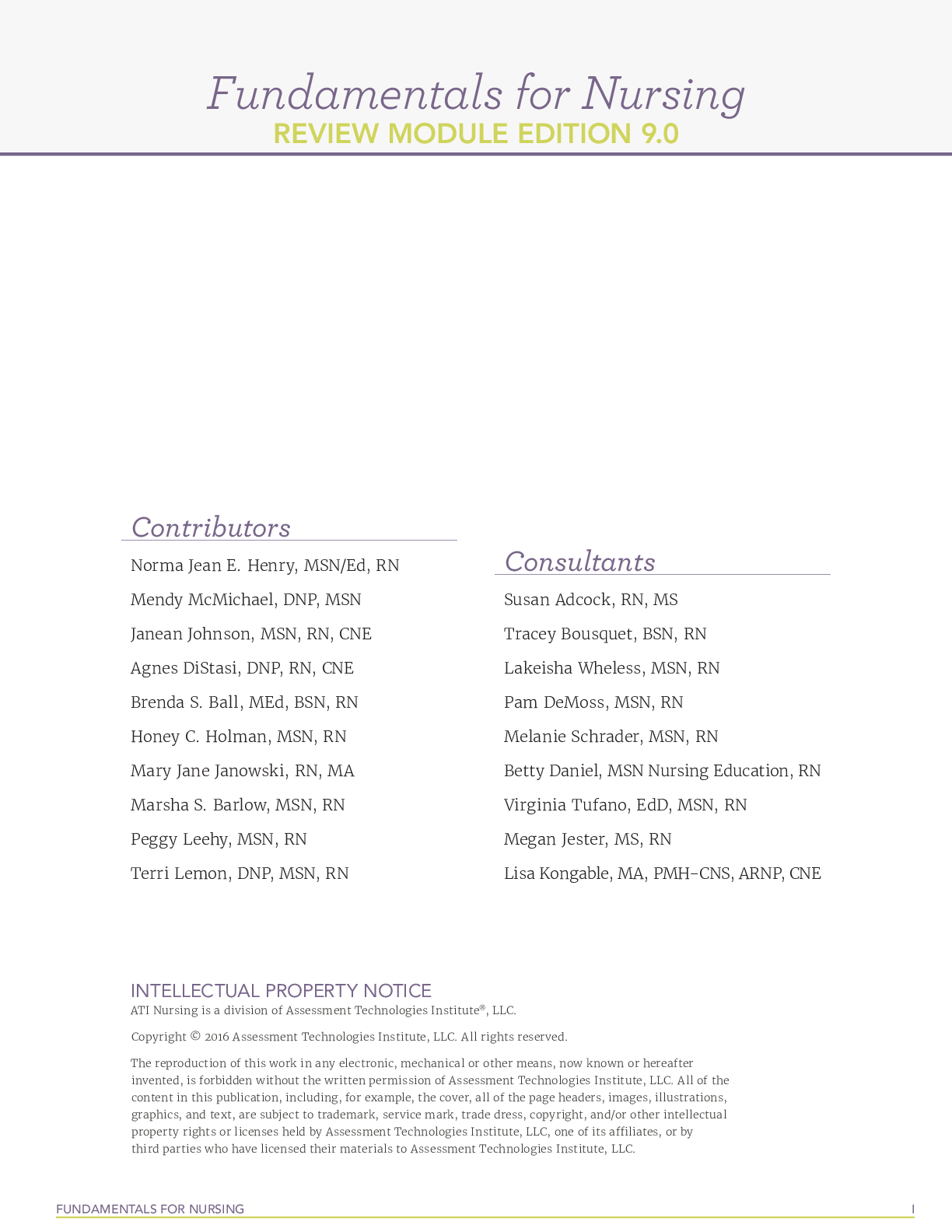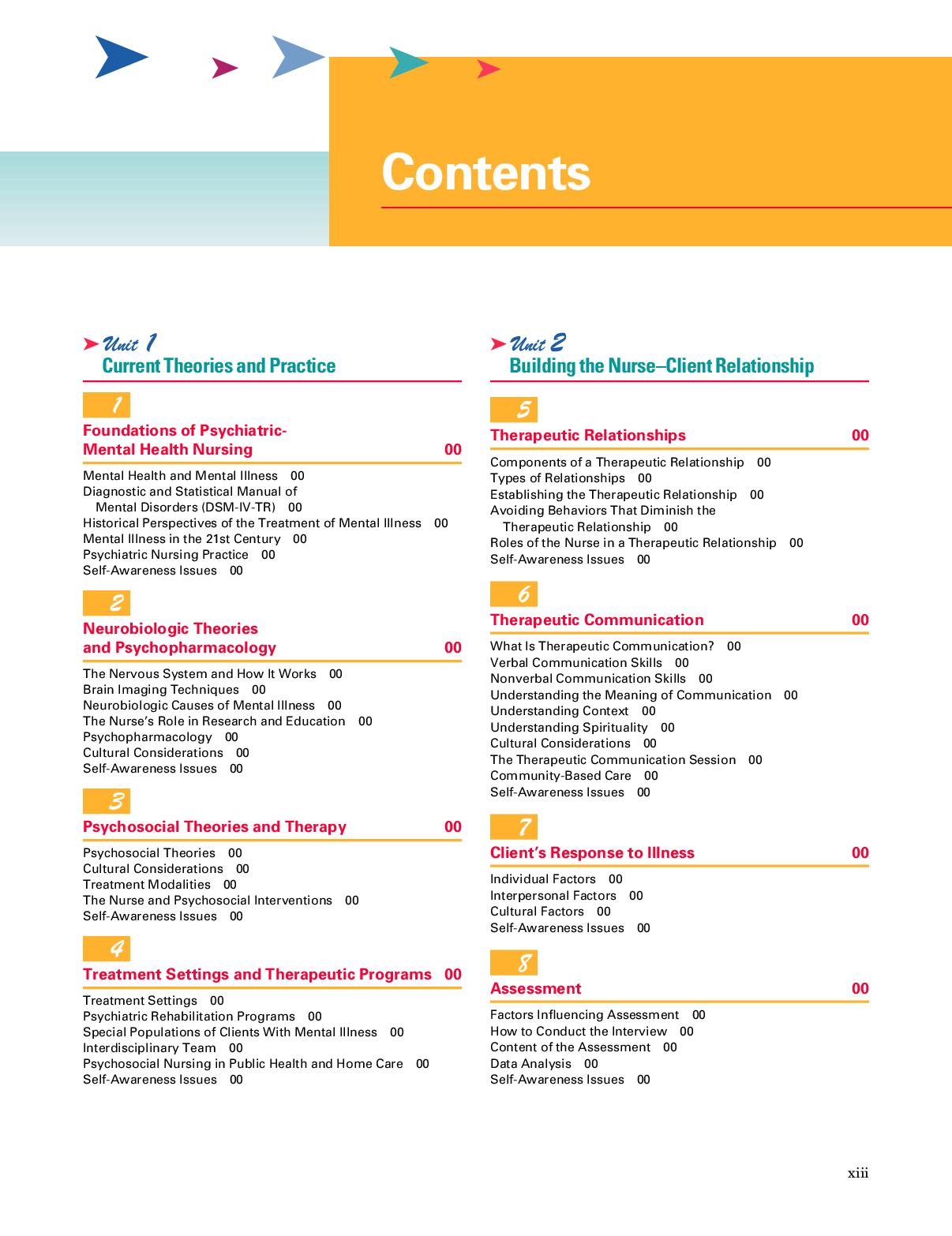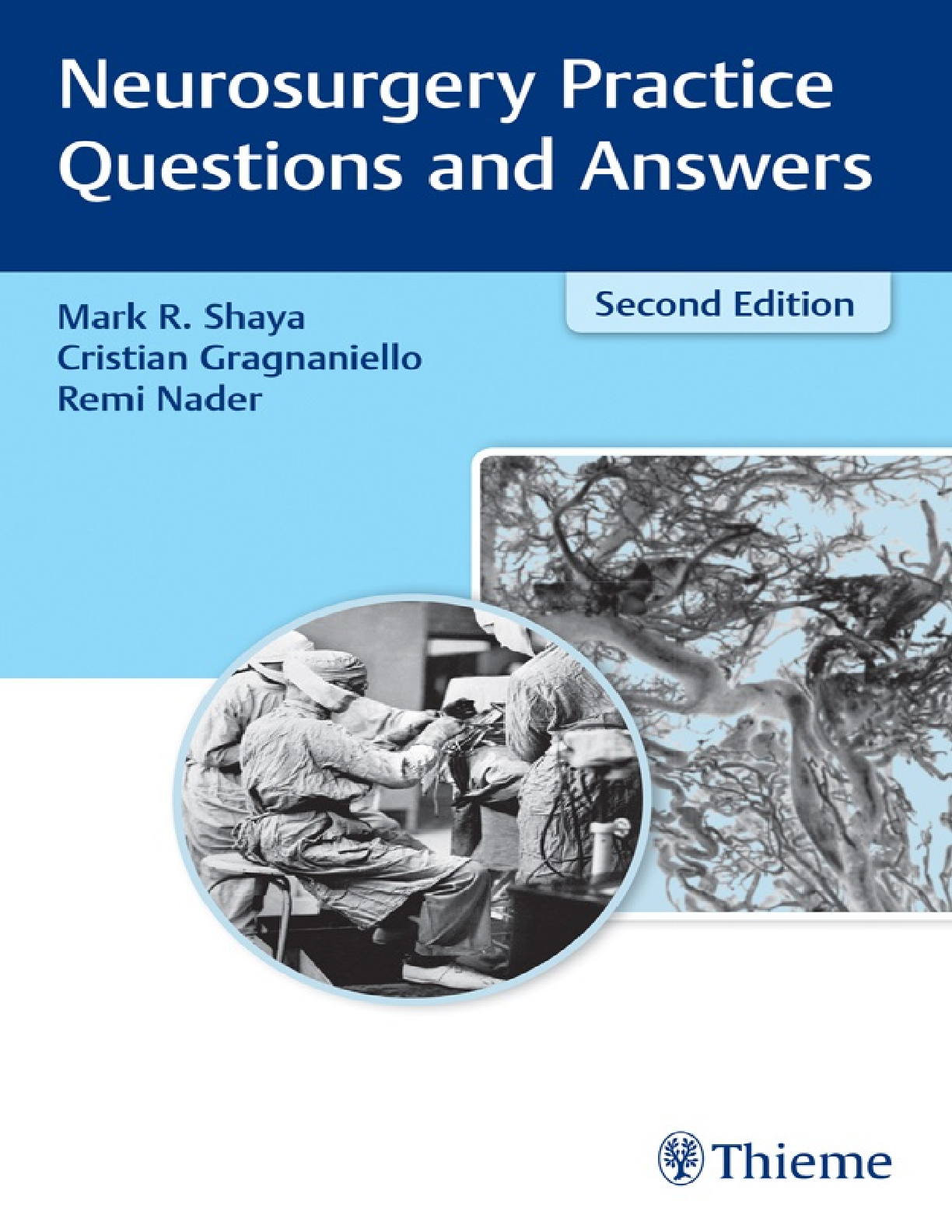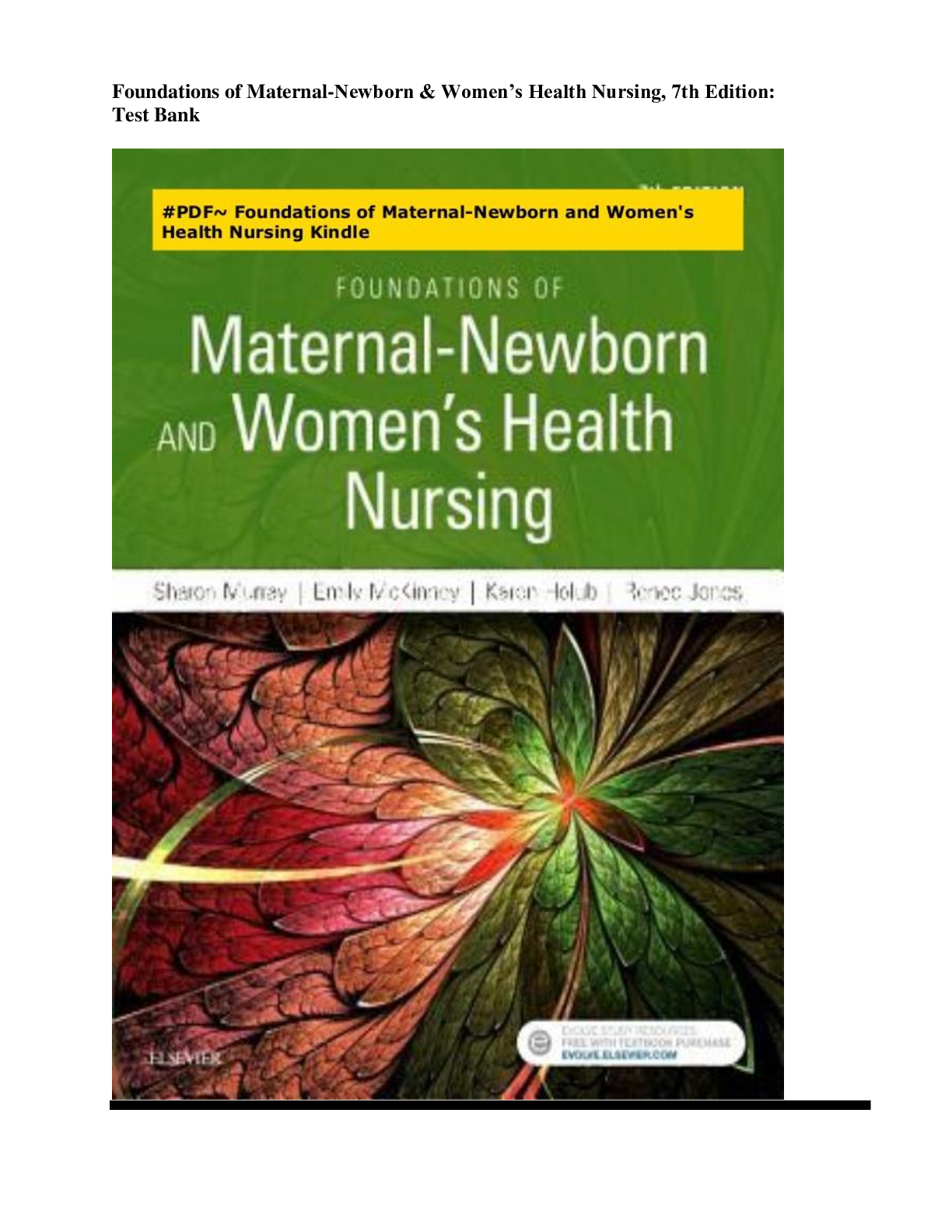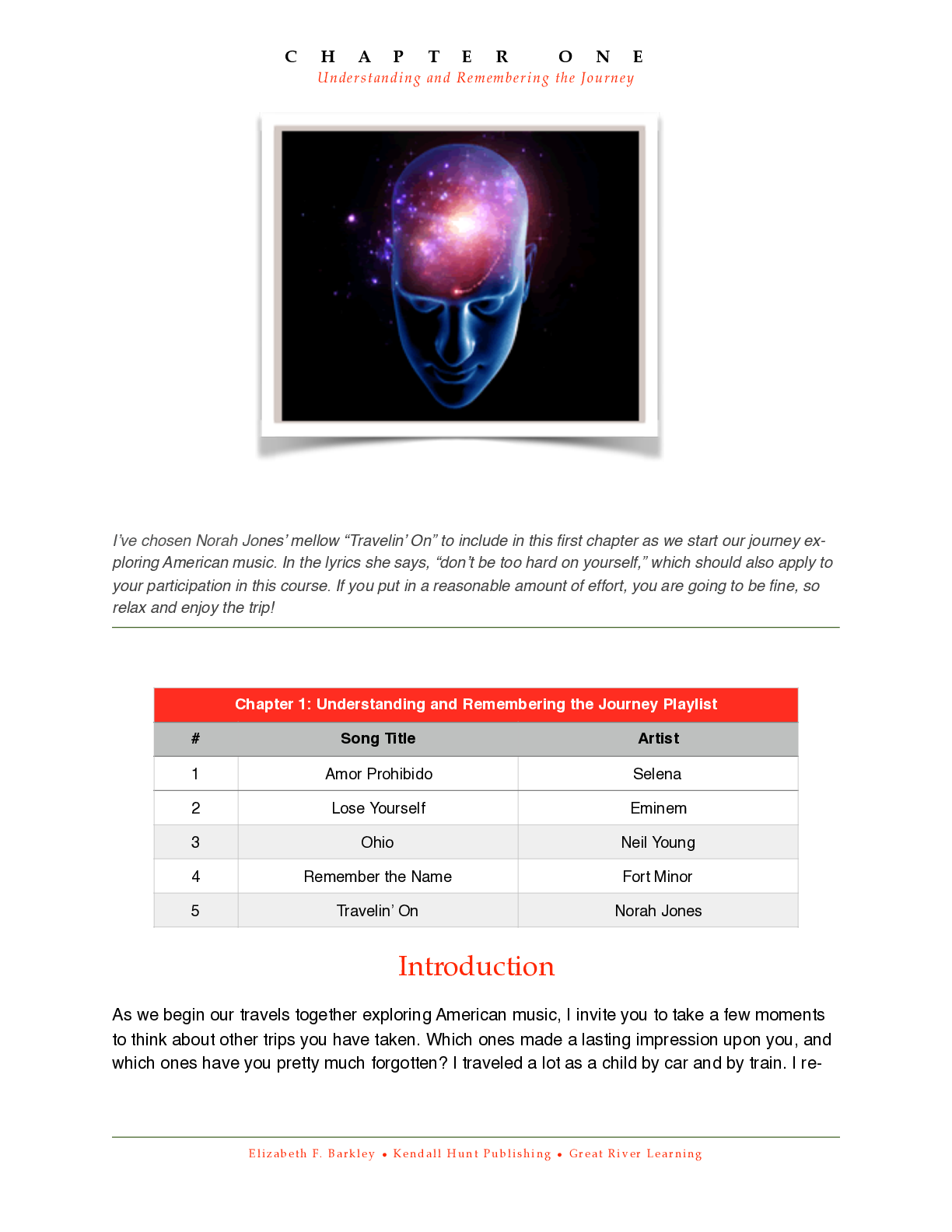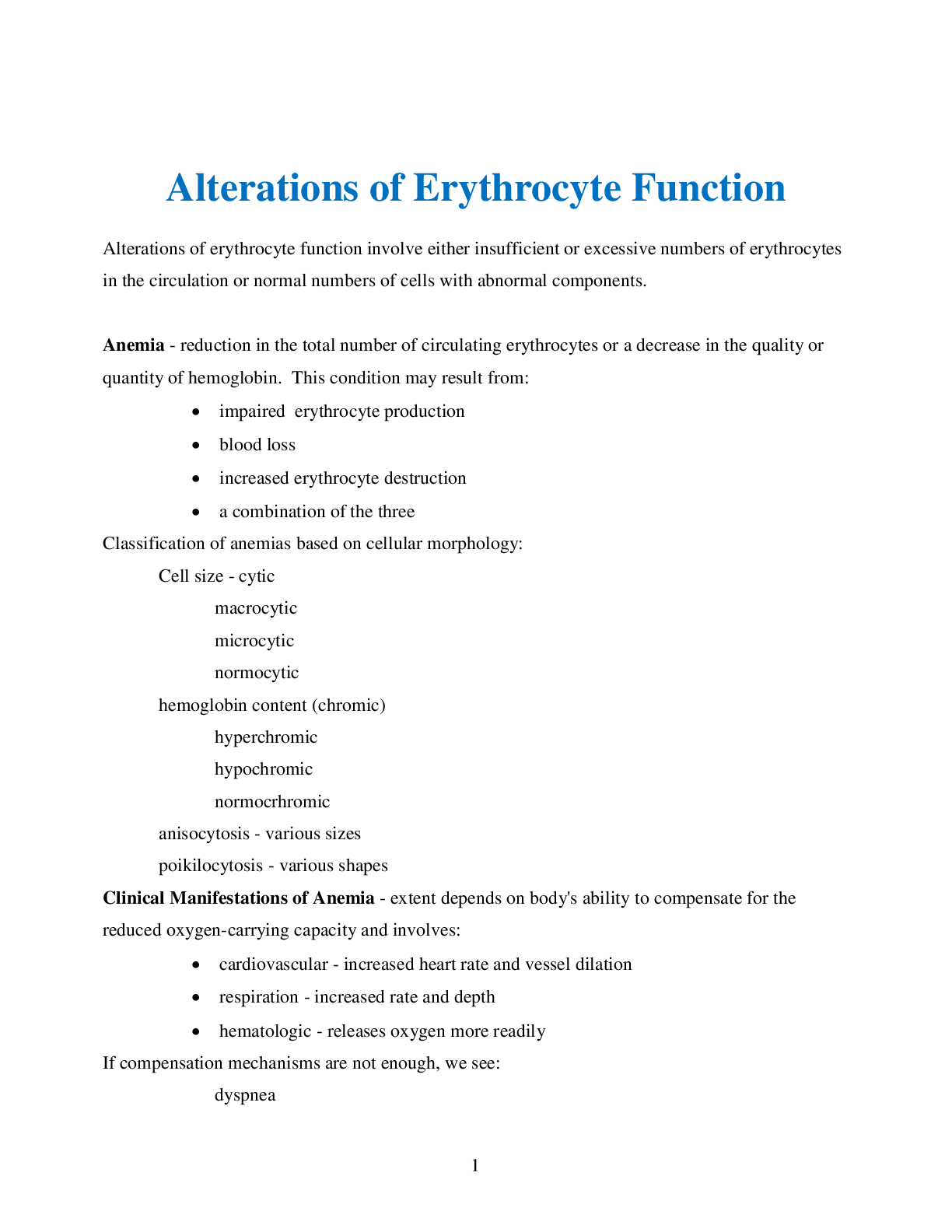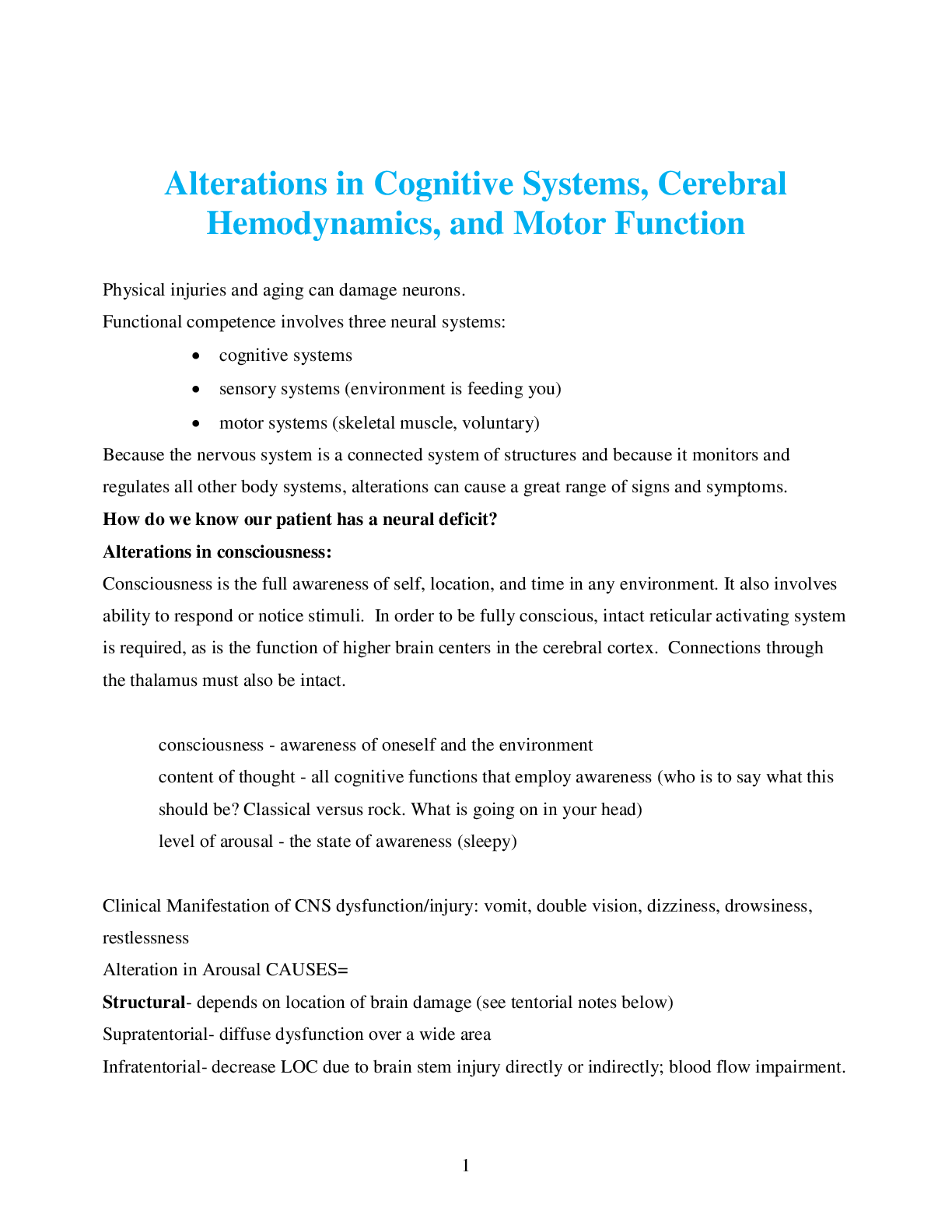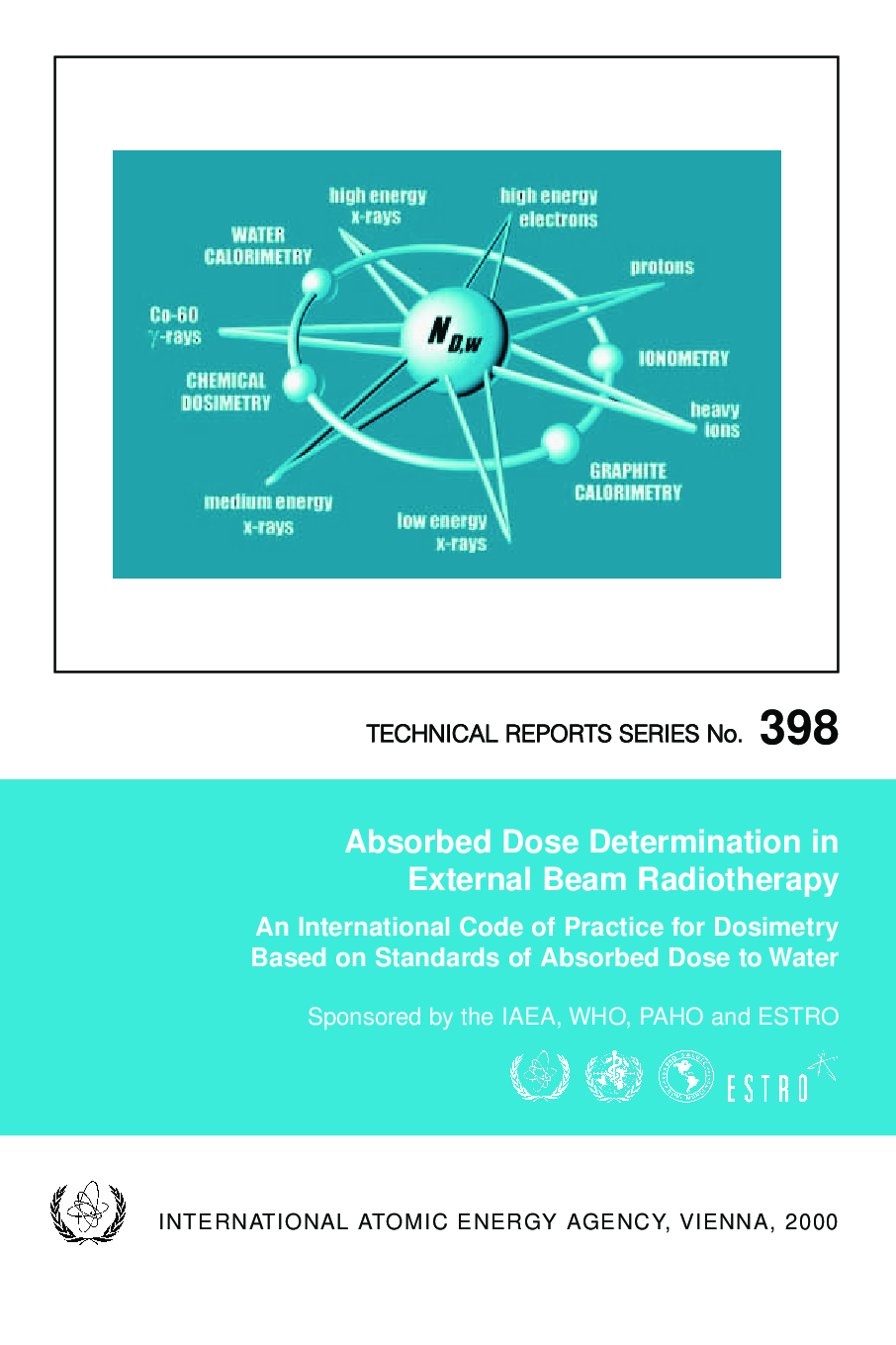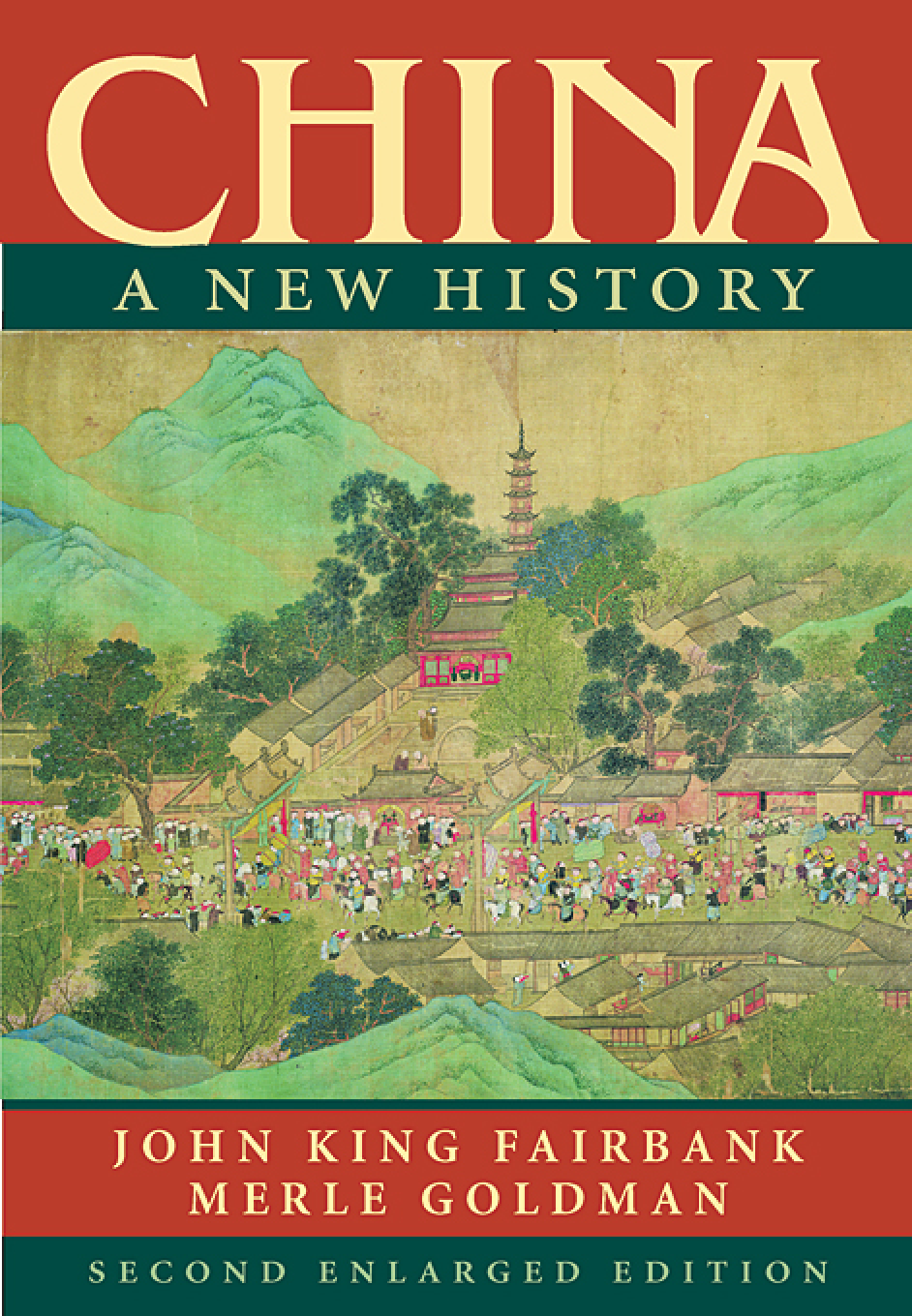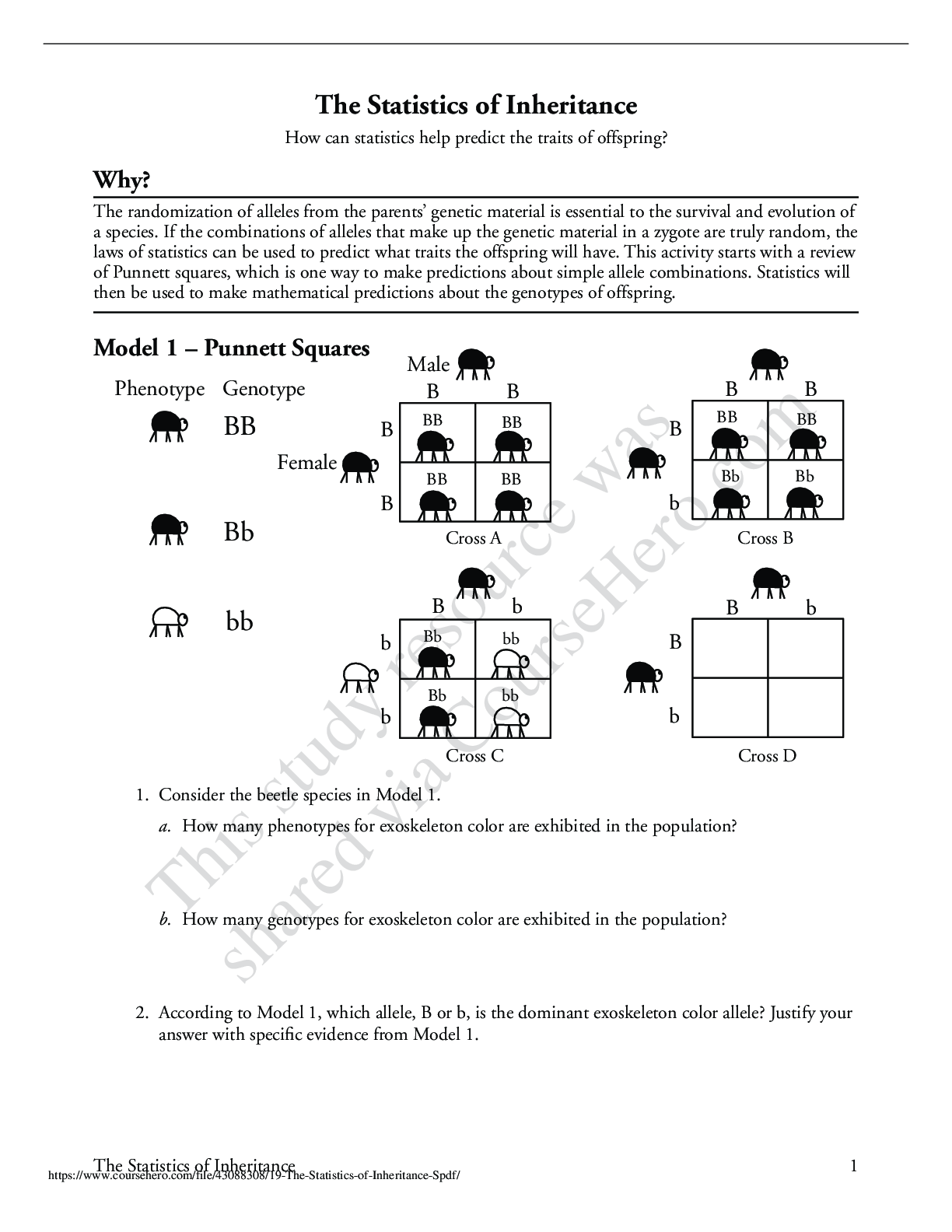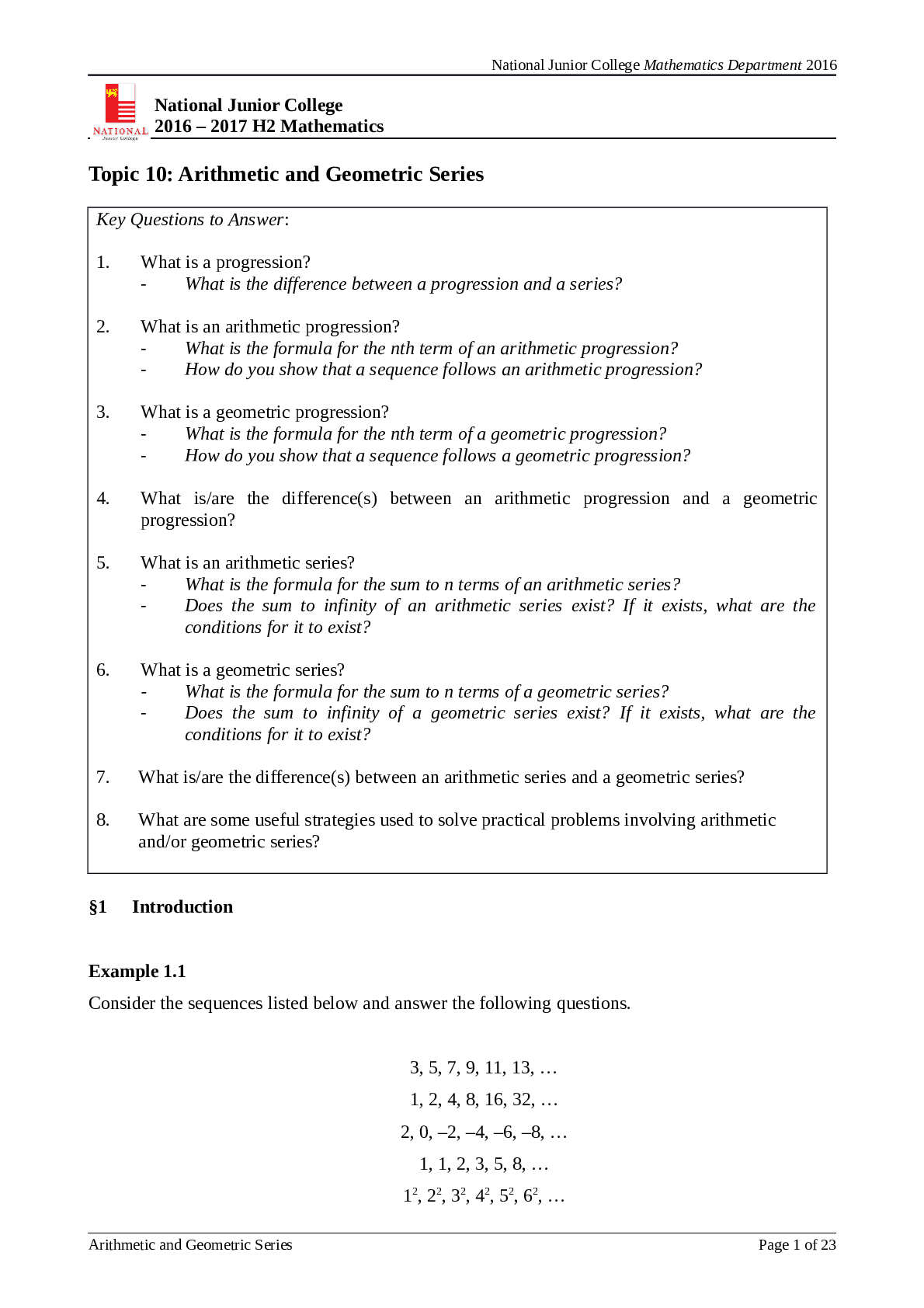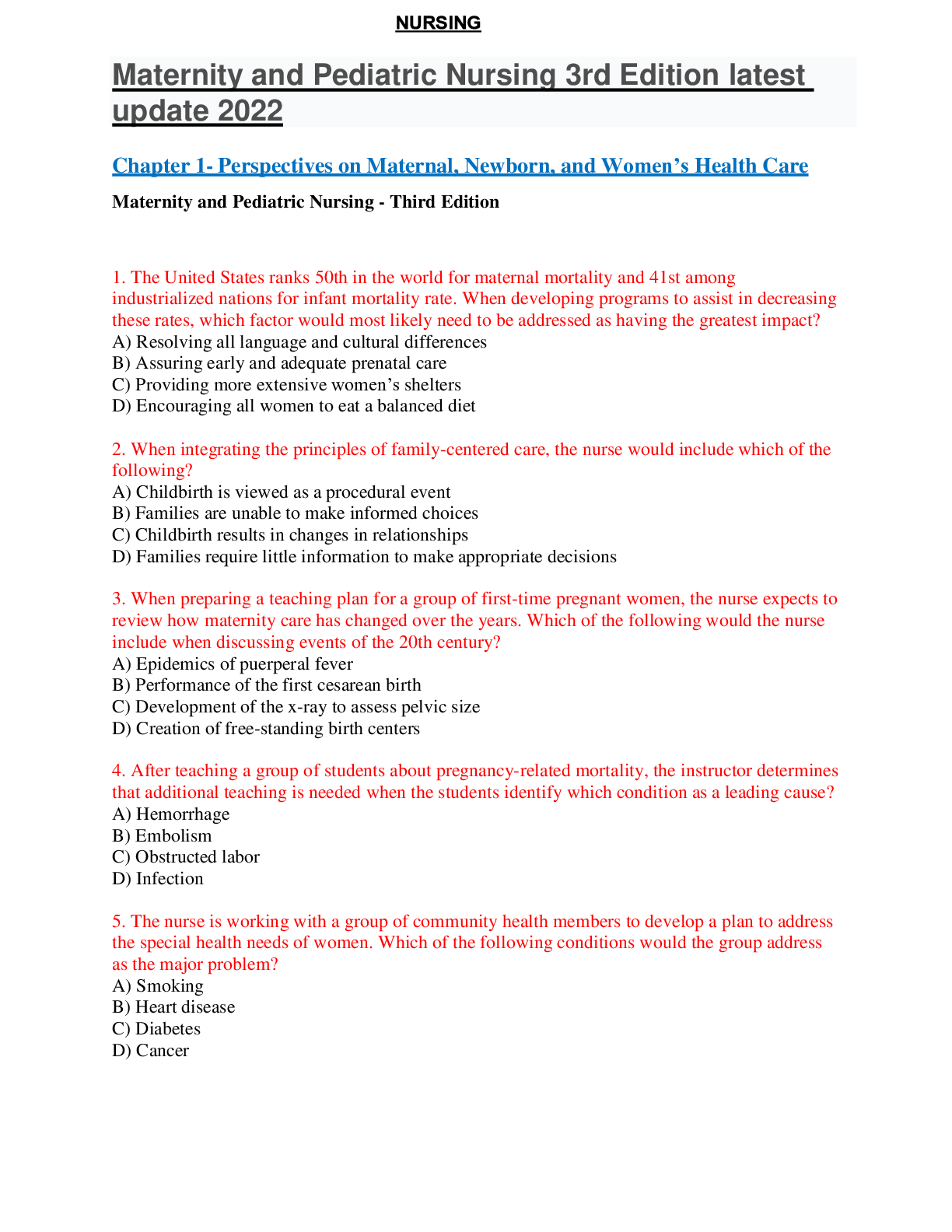Religious Studies > Text Book Notes > History of The Jews: The Medieval and Early Modern Periods UNIT 1: INTRODUCTION UNIT2 (All)
History of The Jews: The Medieval and Early Modern Periods UNIT 1: INTRODUCTION UNIT2
Document Content and Description Below
: Jewish Responses to Defeat and Exile from the First to the Third Centuries Preliminary Questions Who are “the Jews”? Why are they dispersed? How is their historical experience unique? Const ants... /Root Components of Jewish Identity/Identities A common history of life as a political-religious community A distinctive culture: Judaism, anchored in a distinctive literary heritage and national language A homeland: The Land of Israel (Eretz Israel) The Land of Israel The ancient Commonwealth of Judah/Judea ITS CULTURE: An all-encompassing state or national religion Centered in Jerusalem and its holy Temple The Judean State and Society HISTORY AND POLITICS (2nd cent. BCE-135 CE): Hasmonean Family (the Maccabees): Ruled 140 BCE-37 CE Perushim (“separatists”) 38-60 CE: Judah came under Roman Imperial control Judean Revolts: 66-70 CE and 132-135 CE Outcome: The destruction of the Judean polity End of Judean Temple, priesthood, political sovereignty Causes of Judean/Jewish Dispersion From 70 CE-onwards Expulsion by Romans Economic and physical devastation of the Land of Israel Christian persecution The Development of Judaism after 70CE “Sages”/rabbis: intellectual heirs of the perushim Main task: To ensure the survival of Judean culture, fight despair Main questions: 1) Why did the disaster occur? What is the cause and meaning of Judeans’ defeat and exile? 2) How and when will redemption occur? When will the Messiah arrive and how could Judeans/Jews cause his arrival? 3) How could Judean culture survive without the temple? How should Judeans worship God now? 4) What does it mean to be a “Judean/Jew” without a state, without a temple, outside of the homeland, in a state of dispersion? The Rabbis’ Answer The rabbis translated/transformed a centralized system of worship (focused on the Jerusalem Temple) into a decentralized system (focused on local communities, synagogues, and homes) To achieve the transformation, the rabbis developed rules and regulations through the creative interpretation and extrapolation of holy scriptures. Outcome of the Rabbis’ Transformation of Judean Culture: Three Pivotal Changes 1) Replacement of the priesthood by the rabbinic elite as the leading Judean social class (now the figure of the “sage” became the ideal Jew ) 2) Replacement of the Holy Temple by the Holy People (the people, Israel, as a legitimate repository of holiness) 3) Replacement of ritual sacrifices at the Temple altar by a system of: A) Religious duties/commandments (613 mitzvot) B) Acts of kindness C) Study of Jewish scriptures and law Unit 3: Rabbinic Judaism in the Era of the Talmud: A Maturing Theory of Jewish History Christianity on the Ascent 312-313 CE: Conversion of the Roman Emperor, Constantine: Christianity legalized and politically favored 394 CE: Theodosius I makes Christianity the official religion of the Roman Empire These events seem to Christians to bolster the Christian notion of supercession/ “replacement” of the “Old,” “carnal” Israel by the “New,” “Spiritual” Israel First-Second Centuries: Two Judaisms in Conflict 1) A movement emphasizing salvation: Followers of “the Way” (a small minority of Judeans) 2) A movement emphasizing sanctification: Followers of the perushim and sages (a vast majority of Judeans) (Also-rans: the tzadokim—Zadokites or “Saduccees,” a priestly faction weakened after 70CE) Second to fourth centuries: A Jewish-Christian schism (facilitated by Pauline theology) The Jewish-Christian Schism Roman imperial legislation: Now has a Christian theological basis, not the cosmopolitanism of Pagan Roman policy Anti-Jewish restrictions A brief moment of respite and hope for the Jews: Julian the Apostate (ruled the Roman Empire, 361-363 CE ) The Challenge to Jewish Culture How / Why could Christianity have triumphed? Was Jesus the messiah, as the Church claimed? Was the promise of Jews’ redemption valid? THE RABBINIC RESPONSE: An elaboration of a model/paradigm of Jewish history UNIT 4: Jewish Culture in the Late Persian and Early Islamic Periods (~ 600-1000 CE) Historical Background: Jews in Babylonia under Sassanid Persian Rule The Babylonian kehillah: Largest in the world following Judea’s demise Cultural center of gravity owing to Babylonian Yeshiv as (= rabbinic academies) 2 main academies: at Sura and at Pumbeditha Jewish Society in Babylonia Settlement patterns: Large, compact masses in rural areas Economic self-sufficiency, relative cultural insularity Political structure: Exilarch (resh galutha = Head of the exile) An inherited position, legitimated by Davidic ancestry and Persian approval Geonim (singular: Gaon) = heads of Talmudic academies (= yeshivot; singular: yeshiva) Agrarian way of life, political stability, cultural independence: All reflected in the Babylonian Gemara (a.k.a. the Babylonian Talmud) The Advent of Islam (610-750 CE) Muhammad’s early career: Treated Judaism and Christianity as legitimate but imperfect revelations Imitated, then clashed with and attacked the Jews of Medina Jews Under Islamic Rule Caliphs granted legitimacy to monotheistic religions Ahl-al-kitb (People of the book): Above pagans, below Muslims Stability of Jews’ legal status due partly to the fusion of political and religious authority in the Islamic world. The Pact of Umar (Redacted in the 700s-800s) 1) Defined “People of the Book” as… Ahl al-Dhimma/Dhimmis = “Protected People” 2) Set dhimmis’ fiscal burden: Special taxes: a) Jizya (poll/head tax) b) Kharaj (land tax) 3) Regulated dhimmis’ public behavior: a) Synagogues b) Clothing c) Civil service d) Buildings, transportation Islamic Expansion The Jewish Community of Babylonia under Islam: The Short Term Successful Jewish adaptation (in contrast to Christians and Zoroastrians) Seventh-Ninth Centuries: Babylonian-Jewish supremacy continued in the Diaspora Unit 5: Early Medieval and Carolingian Europe (Fifth-Ninth Centuries): Relative Peace and Prosperity in Ashkenaz The End of the United Roman Empire Fourth century: Roman Empire splits into the Byzantine Empire and Latin Christendom The Western empire was invaded by Germanic tribes Latin Christendom = central, western, and northern Europe The Early Medieval Period = Gothic, Merovingian Periods: 300s-600s CE Carolingian Era: 600s-800s CE (Holy Roman [=Carolingian] Empire: 768-840 CE) Western Jewry: Demographic Concentration Iberian Peninsula Northern France Italian Peninsula By the tenth century: Movement to the Rhineland + entrenchment of Iberian Jewry Emergence of ethnic sub-groups: Ashkenazi(c) Jewry (in Ashkenaz) Sephardi(c) Jewry (in Sepharad) Favorable conditions for Jews Under Germanic rule: Economically skilled, "in-demand": Traders, networks, no rivals Cultural intermediaries between Christendom, lands of Islam Conversion to Judaism: Was common and attractive to slaves Germanic peoples’ Christianity was relatively superficial (no theologically sophisticated aversion to Judaism?) Dealings with local rulers: Service in exchange for protection High degree of SOCIAL, ECONOMIC INTEGRATION despite legal inferiority ACCULTURATION: in terms of physical appearance, social contacts, use of vernaculars INTERNAL AUTONOMY (law is "personal," not "territorial") Access to military power The Exception: Visigothic Iberia Visigothic Kingdom in the Iberian Peninsula: 500s-early 700s CE 613 CE: King Sisebut at the Council of Toledo Policy of forced baptism Jews in the Carolingian (Holy Roman) Empire (768-840 CE) Charlemagne (742-814) Louis the Pious (778-840) Legal protection of Jews now formalized through charters: Defined Jews as personal wards of sovereign Bestowed rights of residence in imperial domains Rights of commerce Legal, physical protection from the crown Fiscal amnesty Free passage (Carolingian charters were the basis of later medieval charters issued to Jews) The Culture of Ashkenazim (Ashkenazi[c] Jews): Absorption of rabbinic culture (esp. Babylonian Germara/Bab.Talmud) Distinct contributions: Rabbinics, religiosity (e.g., piyuttim) Strong mental connection(s) to Jewish centers in Near East Kalonymide family (Kalonymos of Lucca) Myth of intellectual pedigree (legacy of "Abu Aaron") Religious poetry, mysticism, application of Babylonian dicta. The Cultural “Glue” Uniting Ashkenazim to the Rest of the Diaspora RESPONSA: Legal opinions issued in response to questions (She’elot) posed by rabbis in the Diaspora. (Singular: Responsum = response). TAKKANOT: Rabbinic ordinances/dicta, pursued & enforced legal principle(s) generally. (Singular: Takkanah) UNIT 6: The Jews of Al-Andalus and the Early Christian “Reconquest”: (Late 900s-1100s CE) Historical Background: Al-Andalus Islamic conquest of Iberian Peninsula: 711-1000 CE. Apogee of Al-Andalus in the 900s Fragmentation of the Caliphate in 1000s; gradual contraction and decline Chr istian reconquista: Completed 1212-1492 Sephardic Culture (929-1100ce): Significant Contrasts with medieval Ashkenaz Size (relative & absolute), social weight Social organization Ethnic culture Relations with surrounding communities 1. Size a. Jews were a substantial urban minority b. Before 1391: relatively prosperous c. Large, compact settlement groups (as in the rest of the Islamic empire) d. Occupational diversity: Agriculture, land- ownership, plus… traditional urban/professional trades lesser reliance on "undesirable" occupations 2. Social Organization a. Kehillah model prevails b. Leadership: More powerful & cosmopolitan than Ashkenazic rabbis c. Elite: Courtiers and notables: Broad education, affinity for Islamic culture d. Offices of “nagid" and Head Rabbi (rav rosh) E.g.: Hasdai ibn-Shaprut (915-970ce): Fomented local yeshivas, achieved independence of Sephardic scholarship from Babylonian academies 2. Social Organization (cont.) e. Formal leadership: Centralized, broad territorial span CULTURAL PROFILE of Sephardi elites: f. Sense of legitimacy, grandeur g. Powers: Taxes, amassing of personal fortunes through political connections h.Upper class: Highly Islamicized Samuel ibn-Negrela (aka Shmuel ha-Nasi—"Samuel the Prince"), 993-1055ce. 2. Social Organization (cont.) i. Scholarly elite: No cultural aloofness E.g.: Yehuda ha-levi (1075-1141): "Secular" poetry & scholarship Maimonides (Moses ben Maimon, 1135-1204): Arabic philosophy harmonized with Jewish tradition (reason and faith) j. Basic social unit: Extended clan 3. Native Culture Measured openness to the social norms and customs of the Islamic majority: Enthusiastic tri-lingualism Culture of dress and hospitality Philosophy Secular literature: Reproduction of Arabic poetic models 3. Native Culture (cont.) Cultural mediation between Islamic society and Christendom: Jewish Merchants and diplomats Outward-looking orientation: Philosophers Interiorist outlooks: Kabbalists, e.g. Yehuda ha-Levi : The Book of the Khazar Unit 7: Jewish Status and Culture in Feudal Europe Prague’s Alteneuschul (Old-New Synagogue), built ca. 1210) Review: Jews in the Christian West Jews were favored subjects under Carolingian Rule: They benefited from Imperial Citizenship + Charters Jewish participation in the European economy and their socialization with Christians was extensive Jews enjoyed internal autonomy: Self-rule by Halakhah (biblical law + Talmudic law + responsa + takkanot) Communal Structure (Applies to Virtually the Entire Diaspora) Kehillah (plural: Kehillot) Kahal Parnassim (singular: Parnass) Haverim (singular: Haver) Rabbi Yeshiva No clear rabbinic hierarchy & jurisdiction beyond local kehillah Gradual decline of Babylonian academies’ supremacy Small size of Ashkenazic kehillot means there were no serious little class cleavages until 11th century. Nuclear family: basic social unit within Ashkenazic kehillot Feudal Society (Applies to European Jews) A system of lordship and vassalage structured by 3 “orders” or social classes: 1. Nobility 2. Clergy 3. Peasantry Autonomous groups: Townsmen, guilds, confraternities, monastic orders, universities, resident aliens. Jews: An autonomous group Pre-Modern Macro- and Micro-Societies Ashkenazic Jews Under Feudalism Privileges, conditions of existence set by landlords’ charters Lords owned Jews: they were legally Servi Camarae ("Serfs of the Lord’s Chamber") Not ordinary serfs, but a chartered corporation Jewish Privileges under Feudal Charters: a. Right of residence b. Internal Autonomy ("state within a state") c. Stable, predictable business roles d. Collective fiscal responsibility to landlord e. Right to physical (police) protection f. Right to self-defense (but arms-bearing was increasingly restricted) g. Physical and economic mobility (with limits) h. Direct access to secular power Usual Restrictions/Disadvantages under Feudal Charters: Residence restricted to specific areas Limits on permitted occupations (e.g., barred from guilds, locked into money-lending) Ban on land-ownership (not total, but increasingly widespread) Unfavorable business regulations (e.g., limits on legal profits) Limits on communal autonomy (e.g., practices deemed “harmful” to Christians) Fiscal exploitation (vulnerability to extortion) Collective liability and punishment Abject political dependency on landlord(s) CONCEPTS FOR DISCUSSION: What was the role of each of these concepts in forming/maintaining Jewish culture and cultivating sense of separateness? 1) Ummot ha-Olam ("Nations of the World," p.14) 2) Galuth ("Exile," p.17) 3) Shechinah ("[The divine] Presence," p.15-16) 4) Ha-Zeman ha-zeh ("This era," meaning, "our day," p.16) 5) Knesset Israel (the "Assembly/Congregation of Israel," p.21-22) Ashkenazic Jews under Feudalism, Continued (~900s-1400s): Jewish intellectual life: RABBINIC EXEGESIS is central Necessary for traditional societies anchored in sacred texts: Tradition/texts must justify everything. Addressed 2 main problems: 1) The problem of Ashkenazic Jews’ dependence on “idolaters” 2) The problem of how to culturally “translate” normative Jewish texts 1. The Problem of Dependence on Idolaters Ashkenazic communities did not mirror the agrarian world of the Talmud Small, poor Ashkenazic communities relied on Christians for survival Justification of commerce approached on a case-by-case basis 3 dominant approaches to legitimizing commerce & social intercourse with Christians: 1. Practicality and dire need/emergency 2. Legal differentiation between biblical and Christian idolaters 3. Counterbalanced by strong internal resistance to conversion 2. The Problem of the Cultural “Translation" of Normative Texts Hebrew and Aramaic usages in Bible, Talmud could be obscure Need to deduce rules from texts for dealing with current circumstances (ones not foreseen by Biblical and Talmudic authors) 2 main exegetical approaches used, perfected: Peshat: the contextual method Derash: the allegorical method European Jewish Scholarship Comes into its Own Schools of interpretation developed in Ashkenaz and Sepharad In Ashkenaz: Rabbi Shlomo Yitzhaki: RaSHI (1040-1105) Tosafist school / Tosafists: “supplementing” of texts with own glosses Summaries (kuntresim) and legal Codes (e.g. Maimonides’ Mishnei Torah) Development of ASHKENAZIC YESHIVA SYSTEM Small seminary model Primary education: Heder Weeding and advancement Family Life in Ashkenaz Ideal of Manhood: Scholarship Women exposed to secular knowledge, economic responsibility Among rank-and-file, men, women share economic responsibilities Literacy, numeracy: High rates; based on Jewish value system and non-Jewish restrictions Familial sovereignty for men; limited (but real) for women Child-rearing: Emphasis on children reflects conditions of life in Ashkenaz UNIT 8: Ashkenazic Responses to Persecution and Interdependence in the Era of the Crusades The Watershed of 1096 FIRST CRUSADE (1096): Main Ashkenazic communities nearly wiped out Imprint of disaster upon Ashkenazic culture owing to: Sheer numbers lost Incidence of martyrdom Near demi se of Kalonymide elite Raised questions re. The relationship between Jews & Christians, the meaning of Galut. Old-New Questions What is the Meaning of this disaster? Was the disaster intended by God? If so, why? What is the meaning of martyrdom for us (Ashkenazic Jews) and for Israel as a whole? MARTYRDOM IN JEWISH HISTORY Hasidim of Hasmonean (Maccabee) Era (BCE): the first "Pious Ones." Martyrdom of Rabbi Akiva (~50-135 ce) & companions under Roman rule Lore preserved in liturgy: Associates rabbinic ideal of piety with self-sacrifice Kiddush ha-Shem: Its Significance in Ashkenaz Rabbinic debate on advisability of Kiddush ha-Shem: Temporary? Public? Consensus: Obligatory, whether public or not (see Katz, p.83) Cultural/Personal aloofness: Behavioral ideal; Ashkenazic Jews as insular spiritual community Rabbis as elite of potential martyrs. Accrual of merit for the community Cosmic-historical significance Desire to publicly reject Christianity, affirm Judaism’s moral superiority Talmudic ideal expanded: Best to perform Kiddush ha-Shem before persecutors The Religious Environment of High Medieval Europe Favors Intense emotionalism Affects Christians and Jews alike The Hasidei Ashkenaz (the Pious of Germany) (Terminology: 1 Hasid, 2 or more Hasidim) Judah ben Samuel ben Kalonymos (a.k.a Judah the Pious, d. 1217) Sefer Hasidim (“The Book of the Pious”) Goals: Religious spontaneity, mystical understanding, spiritual communion with God The "Law of Heaven": A higher, esoteric law, above the exoteric (consistent with Kabbalah—Jewish mystical tradition) Ashkenazic Hasidut (Piety): A culture-specific, post-crusade ideology Behavioral prescriptions: Fasting, self-mortification / exposure = ASCETICISM Elements of the Hasidic Ethos A visceral & generalized aversion to Christianity Desire to limit Jewish interaction with Christians Purposes: To enforce existing prohibitions, reject practical flexibility in Ashkenazic jurisprudence (NOTE: the Hasidic ethos was only adopted strictly and completely by Hasidim, and was mitigated by the imperative of proper public behavior, charity to individuals of any faith-community Unit 9: Confronting Anti-Judaism in High Medieval Europe Unit 9: Confronting Anti-Judaism in High Medieval Europe From "Augustinian Toleration" to "Anti-Judaism." The High Middle Ages: Appx. 1050-1450 Anti-Judaism: A new, theological conception of Jew s and Judaism: 1) Jews as anti-Christian subversives, not just "blind“ to Christianity 2) Judaism should be defeated, Jews converted or expelled Historical Background for Understanding Anti-Judaism: 1) Commercial revolution / economic "take-off" of Western, Central, Northern Europe Rapid urbanization & formation of commercial centers Growth of mercantile, urban (middle) classes Growth of literate bureaucracies to serve ruling classes New groups compete with and increasingly displace Jews Jews gradually move toward less desirable occupations: Peddling, money-lending Rise of money-based economy Money: a destabilizing force, opposed to traditional Christian belief, "apostolic poverty" Jewish money-lending: conspicuous; seems to confirm supposed "materialism" Jews’ roles in money-economy: Fuel reaffirmation of traditional Christian view of Jews as "demonic" In reality: Jewish role in economy is minor Anti-Judaism: A channeling of Christians’anxiety about themselves? 2. A Broadening of Europeans’ Mental Horizons Christian contact with Muslims and Jews increases in the cities, in Iberia, abroad; leads to "culture shock." Development of outward, aggressive orientation; corresponds to economic expansion New self-consciousness: Europe as a unitary Christian civilization, a spiritual-political community; theory of "Papal Monarchy." HOW DID ANTI-JUDAISM "WORK"? On 2 levels: 1) Popular Anti-Judaism Colored by folk myths about Jewish difference Blood libels / host desacration libels Riots against kehillot HOW DID ANTI-JUDAISM "WORK"? (cont.) 2) "Learned" or "Scholastic" Anti-Judaism Conversionism How to eliminate Jewish "danger"? Mendicant Orders: Build intellectual foundation, polemical models of Anti-Judaism How to reach Jewish souls? Forced sermons & Disputations “Scholarly” Anti-Judaism Forced Sermons Interference with Jewish services Mendicant friars + police + Christian audience Purpose: conversion through demoralization Implicit threat of attack Disputations Staged debates Compulsory Jewish attendance Coercive environment, procedures Christian disputants (usually Jewish converts) Portrayal of Judaism as blasphemous perversion of Christian Truth Portrayal of Talmud as actually confirming Christian truth but still denied by Rabbis (who “know better”) Jewish disputants: Most avenues of defense foreclosed as “offensive” to Christianity Possible approaches: (1) evasion, (2) obsequiousness Dilemma: How to stand firm without provoking assault on Jewish community? Focus of Controversy: Hebrew text of Bible (e.g. Genesis 49:10) No real debate: Christian intimidation, addressing "home audiences." Paris (1240) Barcelona (1263): Moses ben Nachman (Nachmanides) vs. Pablo Christiani A consequence of Christian "discovery of the Talmud." Unit 10: Christian Spain and Portugal: From Coexistence to Expulsion and the Problem of Conversos. The Late(r) RECONQUISTA: Jews in Iberian lands, 1300s-1492 A case study of triumphant anti-Judaism 12th century Christian Spain: True Convivencia (coexistence)? Argument in favor: The example of Toledo under Alfonso X: Jewish and Muslim linguists translate Arabic philosophical works under Christian supervision Argument against: Jewish and Muslim communities under Christian rule: "Microsocieties"? Jewish upper classes: bankers, administrators, advisors to the crowns. Stability / Convivencia decline toward the 13th century. Medieval Christian Spain: A Crusading Society Iberian kings became involved in religious lives of their subjects Contrast with central European monarchs (e.g. Frederick Barbarossa). James I of Aragon: Arranges for disputation of Barcelona 1263 European anti-Jewish conversionism: Led by Iberian friars Iberian Christians: at the forefront of "scholastic" anti-Judaism. Iberian Jews under a Protracted Conversionist Campaign: Application of anti-Jewish regulations of Fourth Lateran Council (1215). Intervention in the administration of internal Jewish life: 1. Dictating what Talmudic texts to exclude 2. Censoring/expurgation of the Talmud 3. Intervening in intra-Jewish disputes in favor of informers 4. Propaganda via Jewish converts The Watershed of 1391 Ferran Martinez preaches in Seville Anti-Jewish riots spread: Mass conversions ensue The conversionist motive was genuine (contrast to 1096 in Ashkenaz) Result: Converso problem. Conversos: Other names: Marranos ("Swine"), "New Christians." Putative identity: insincere converts (not necessarily true). Limpieza de Sangre Limpieza de Sangre (Purity of Blood) Emerged as a political/social category in 1449, Toledo. A spontaneous attack on a converso tax collector metastasized into a riot against converso and Jewish sectors of the city Anti-royal aspects of revolt: Directed partly at royal officers who were reputed to favor conversos Pero Sarmiento: the Sentencia-Estatuto /Sentence-Statute of Toledo (1449) Provided legal sanction for anti-converso discrimination on the basis of descent, not religious status Becomes blueprint for other "Statutes of Purity of Blood" The statutes were adopted on an ad hoc basis, always disputed, but expressed of a widespread, proto-racist ideology Iberian Conversionism: The Price of its Success: Christian dogma on conversion: Rejected in practice and at the popular level. 1500s-onward: Descendants of original converts were also called "conversos"/"New Christians'': an ethnic identity develops. The Problem of conversos: Anti-Jewish agitators pursued 2 goals: 1. Introduction of centralized religious tribunal to pursue ``judaizing" 1478-1482: Spanish Inquisition instituted. 2. Expulsion of Jews to permit smooth Christianization of conversos. 1492: Jews expelled from Castile & Aragon 1497: Jews suffered mass (forced) conversions in Portugal. 1498: Jews expelled from the kingdom of Navarre Significance of 1492-7 Expulsions Left a large converso population isolated "Crowning" achievement of European Anti-Judaism Brought to an end the largest, most prosperous, most acculturated Jewish communities of the Middle Ages Led to the formation of far-flung Sephardi diaspora Sephardi resettlement in North Africa. Italy, Asia Minor, Land of Israel, Greek Isles, etc. Ladino / Judeo-Spanish developed as a classic Sephardi language Culmination of a protracted process of expulsion of Jews from western & central Europe DEMOGRAPHIC REORIENTATION OF WORLD'S JEWISH POPULATION Significant Expulsions of Jews, 1290-1498: The Fruit of High Medieval Anti-Judaism 1290: England 1306, 1322, 1394: France 1367: Hungary 1381: Strasbourg 1421: Austria 1426: Cologne 1439: Augsburg 1450: Bavaria 1453: Breslau 1483: Andalusia (southern Spain) 1492: Castile and Aragon (“Spain”) 1492‑3: Sardinia 1493: Sicily 1495: Lithuania 1496: Portugal (replaced by forced conversion in 1497) 1498: Navarre Unit 11: Jews in Renaissance Italy Jews in Renaissance Italy : An Italian Passover Haggadah (fifteenth century). : The Ashkenazic synagogue in Venice (sixteenth century) Unit 13: Readmission and Cultural Coalescence in the Ottoman Empire and a Fractured Europe. Jews in the Era of Mercantilism (1510-1650): Readmission and Prosperity Early Modern Europe was fractured because of: 1. Wars of religion 2. Splits among Protestants 3. The development of he gemonic, centralized governments: Absolutism and Mercantilism Major European Trends Affecting Jews State Mercantilism: 1. The Pursuit of trade 2. Accumulation of wealth as a primary goal of state (not based on religious considerations) Christian Hebraism: 1. Christian humanists 2. Protestant scholars 3. Judeophile strands of thinking…? RELIGIOUS TOLERANCE + ECONOMIC SELF-INTEREST The READMISSION OF JEWS into parts of Europe IN THE LATE 1500s, 1600s (e.g., Holland, France, England, some German territories) Today’s Agenda: 1) The Reuchlin Affair 2) Seventeenth-century Holland 3) Seventeenth-century England The REUCHLIN AFFAIR Johannes Reuchlin (1455-1522) Controversy: Are Jewish books fit for Christians’ study? Johannes Pfefferkorn: Opposed lay Christian access to uncensored Jewish sacred literature Polemics undermined support for scholastic establishment & Roman Church Upshot of the affair: ASPECTS OF JEWISH CULTURE PROTECTED AND DEEMED WORTHY OF PRESERVATION AND LEGITIMATE STUDY BY CHRISTIANS Ambiguous results: “Letters of Obscure Men”: Pseudo-racist definition of Jews The Case of the NETHERLANDS in the SEVENTEENTH CENTURY Presents less ambiguous results for the Jews than the Reuchlin Affair A hotbed of Protestant revolt, diversity Anti-Spanish politics : Dutch Revolt (ends in the 1640s) “FREEDOM OF CONSCIENCE”: In practice applied to Jews Late 1590s: Jewish settlement permitted on mercantilist grounds a. Jews from Italy b. Conversos from the Iberian Peninsula: Option to embrace Judaism Robust religious polemics Sephardi polemicists as “insiders-turned-outsiders” of Christendom The Judeo-Portuguese Hebrew Nation Coalesces Portuguese Conversos: Coalesce as a solid ethnic bloc: The “Portuguese of the Hebrew Nation” Evidence of Sephardi clout in the Western Diaspora: Ancona Boycott (1556) : Doña Gracia Nasi Printing Houses Dutch Kehilla received refugees from Cossack massacres (1648) Relative material and political security: Kehillot as prime economic assets Sephardic acculturation, wealth and growing self-confidence in evidence in synagogues, self-presentation (contrast with poorer, more conservative Ashkenazim) 1615: Public profession of Judaism legitimized 1639: Portuguese community organized as separate congregation 1675: Most important Jewish merchants granted citizenship The Case of SEVENTEENTH-CENTURY ENGLAND Jews had been expelled in 1290 1600s: Atmosphere changed: Rulers acknowledged the Dutch example as an economic success Radical and millenarian Protestants: Readmission as “cure” for England? “Fifth Monarchy Men” Some of Oliver Cromwell’s supporters: Conditional Readmission OK Menasseh ben Israel (1604-1657): Believed Messiah to come only after dispersion of Jews is complete—to the “end of the Earth” His argument: “End of the Earth” = Angleterre = England: Hence readmission to England is imperative 1656: Formal readmission of Jews to England with economic rights but not political/civil rights Unit 14: Jews in Poland-Lithuania to 1649. Eastward Migrations: The Ashkenazic Culture Area Expands to Eastern Europe Ashkenazic move eastward: 1260s-1600s 1264: Boleslaw, prince of Kalisz invited Jews to his lands 1134-1367: Polan d 1388-1389: Lithuania 1453: King of Poland renewed settlement charters Aim of charters: To permit development of marginal regions “Poylin” Takes Shape Jewish population growth: 1500: 10-15K 1648: 150K (largest Jewish community in the world) The Polish Context 1500s-1600s: Power of Polish nobility grew at expense of Polish crown Polish Magnates: Wish to develop eastern (mostly Ukranian) land-holdings No native middle class Economic Foundations of Jewish Life in Poland-Lithuania The Ashkenazic Immigrants… Transferred Ashkenazic kehillah model ...it changed, diversified socially & economically New economic opportunities: (Absence of strong guild system meant Jews had little competition) 1) Fiscal agency 2) Tax collection 3) Estate management (by “arrendators”) 4) Diverse mercantile occupations 5) Diverse Crafts Jewish Arrendators (Arenda = lease) 1) Earned part of agricultural product of estates 2) Supervised: Farming of crops Timber harvesting Manufacture of flour and spirits Export of products by water 3) Participated in river trade Jews in River Trade & Associated Work 1) Arrendators stimulated related econ. sectors: Barge traffic Customs Ship-building Conditions of Jewish Life (1260s-1630s): Favorable despite clerical and popular anti-Judaism Settlement patterns: Cities and countryside By 1700s: most Jews resided in Shtetlach (Singular: Shtetl = small towns, villages) Cultural Developments (16th-17th cent.) Yiddish coalesced as written language, acquired Slavic elements Rabbinic Culture: Highest institutional development and prestige since Babylonian heyday Ashkenazic Scholarship in Poylin Advanced curriculum: Emphasis on: 1) Babylonian Talmud 2) Rashi 3) Tosafot (commentaries of the Tosafists) Curriculum now taught by paid professionals Kehillot maintained Yeshiva students Students tutored local children Yeshiva heads: their prestige skyrocketed Rabbinic discourse: Became ultra-academic exercise Preferred modes of analysis: Pilpul and Hilluk Practicality & instrumentality taken seriously: Shulhan Arukh controversy: Shulhan Arukh (“The Set Table”): Yosef Caro (published 1564) Ashkenazic authorities objected to its “freezing” of fluid jurisprudence Accepted among Ashkenazim conditionally The Institutional Development of the Jewish Communities Vaad Arba Aratzot = Council of the Four Lands Great Poland Little Poland “Red Russia” (Podolia and Galicia) Volhynia (Lithuania seceded in 1623) A supra-communal council 1) Issued takkanot 2) Selected shtadlanim 3) Other functions: (See reading assignment) 4) Composed of Rabbis and parnassim (lay magistrates) Revealed complexity and coordination of kehillah system in the absence of a strong central Polish authority The CHMIELNICKI (Cossack) MASSACRES, 1648-1649 A “recipe for destruction.” The ingredients: 1. Orthodox Ukranian peasantry resented Polish landlords and their Jewish representatives. 2. Ethnic animosity of the Cossacks 3. Territorial ambitions of Crimean Tatars 4. The weakness of the Polish crown and army 5. Jewry: Exposed locally Bogdan Chmielnicki allied with Tatars, peasants, then Russians: Revolt began Theoretical target: Polish nobility and (Catholic) clergy De facto targets: Jewish communities Polish armed forces attack Jews as well (suspected them of collusion with Sweden) Cossacks & peasants: Unusual brutality and destructiveness Tens of thousands Polish-Lithuanian Jews were killed (estimates of total Jewish population and of casualties vary in the extreme) Unit 15: Messianic Currents and the Sabbatean Explosion Developments in Jewish Mysticism Kabbalah = “Tradition”: a mystical discipline Esoteric, usually elitist (e.g. Hasidei Ashkenaz) Principal goal: Mystical closeness to the divine Rooted i n rabbinic theism (=God involved in creation, although separate from it) Mediates between (1) transcendent God of (Greek) philosophy and (2) immanent God of religion The History of Jewish Mysticism Palestinian and Babylonian Rabbis (2nd-4th centuries): Contemplative mysticism Visualization of divine “throne” or “chariot” Kabbalah systematized in 12th-13th century Provence (SE France) under influence of Neo-Platonism Creation as emanation of divine light from the Ein-Sof (= “The Infinite,” the transcendent dimension of God Pseudepigraphal works Sefer Bahir (Book of Brightness/Clarity) Identified and described 10 attributes of God 10 attributes give shape and order to the created universe (reality) 10 attributes arranged as a stable structure / scheme The structure/scheme = the “Upper World” = the immanent dimension of God Each divine attribute = Sefirah Sefirot (plural) Sefirotic structure: The foundation of all Kabbalistic thinking Moses de Leon’s sefer ha-Zohar (“Book of Splendor”) Kabbbalah and Jews’ Role in the Universe Sefirotic structure: Balanced and orderly Sefirot have direct correspondence with “Lower World” E.g.: Shekhinah and Knesset Israel What happens above, affects what happens below & vice-versa Role of (Jewish) individual in Kabbalistic scheme Human personality has divine aspect Human soul as microcosm of entire sefirotic structure Neshamah: The part of human souls that is divine in substance Hence: Human beings have capacity to infuence Upper World: Gifted Jews can help to restore primordial unity of the Upper World that existed before Adam’s sin by performing mitzvot. The Evolution of Kabbalah in 16th-Century Safed Local kabbalists furthered the notion of human influence upon divine realm 1530s-1600s: Safed was an intellectual center in the Diaspora Kabbalistic renaissance: CONTRIBUTIONS OF THE SAFED MYSTICS: 1. Imbued Kabbalah with messianism 2. Popularized Kabbalah 3. Reinterpreted Jewish history in mystical terms (esp.Galut) to explain that Jews’ exile & suffering have counterpart in the life of God Isaac Luria (1543-1572) and His Students: Their Main Contentions: 1. Shekhinah in exile; cut off from source of divine light. 2. God had suffered along with Jews, a part of God was exiled from God. 3. God had suffered a tear, the divine structure needed mending. Tikkun ha-Olam: (“Repairing / Mending of the World”) = Restoration of universal unity by “lifting” Shekhinah to its original source of divine light. How to mend the world? § Through performance of every act with mystical intention § Through performance of mitzvot as mystical duties § By banishing sin through systematic repentance An ascetic ethos: § Self-denial, meditation, fasting, atonement, mystical concentration: § Lift scattered sparks of exiled divine light from the lower to the “Upper World.” Luria’s Theory of a Primordial Catastrophe How did part(s) of God become exiled? A primordial catastrophe: God’s self-contraction necessary for creation of the universe Contraction leaves a “god-less” space Divine light poured into “god-less” space Light was too powerful; it broke “vessels” Resulting mess: divine sparks scattered and sank to bottom of “god-less” space. The sparks correspond to the Shekhinah SEVENTEENTH-CENTURY MYSTICISM: Toward Activist Messianism Owing to printing, penitential manuals circulated widely Emissaries from Land of Israel Kabbalist havurah (small study group) model spread throughout Diaspora Shabbatai Zvi (1626-1676) A native of Izmir (Smyrna) “Strange acts”: Forbidden or simply offensive, bizarre Excommunication and expulsions Nathan of Gaza (1643-1680): The “spin doctor” Convinced Zvi of messianic role Served as movement’s ideologue, Kabbalistic legitimator His tracts garnered support throughout the Diaspora prior to Zvi’s arrival Unit 16: Decline in Poland and the Beshtian Hasidic Revival THE RISE OF HASIDISM The first serious challenges to traditional order of Jewish life? Objective conditions that accelerated the breakdown of that order POLAND-LITHUANIA in the 1700s: 1) Internal disputes/ Crisis of leadership 2) Economic decline 3) The rise of Beshtian Hasidism INTERNAL DISPUTES and a CRISIS OF LEADERSHIP Arendators (arenda): Lords’ lessors/agents/admin. Communal indebtedness: growing toward 1800 Subversion of kahal(s) and their authority Political fusion of money and learning Decline in rabbinical prestige Decline in the quality of yeshivas Crisis of confidence = anomie a) Diminished attachment to institutions b) Unwillingness to continue support c) Readiness to form new attachments HASIDISM : A Response to / Product of Anomie? Hasidism = “pietism”: A PIETISTIC MOVEMENT SUFFUSED W/ MYSTICISM Singular: a “hasid” plural: “hasidim” 1) SPIRITUAL IDEAL: DEVEKUT (“Cleaving [to God]”) = Spiritual communion with God (not all can achieve it consistently, but should try anyway) 2) The HUMAN FOCUS OF the MOVEMENT: the TZADDIK (“Righteous One”) Spiritually gifted Intercedes /mediates for community of followers at God’s court Not necessarily a Talmudic prodigy Called “Rebbe” First model : ISRAEL BEN ELIEZER, THE BAAL SHEM TOV (“Good Master of the Name [of God]”), ~1700-1760. Characteristics of Hasidism, cont. 3) PREMISE OF THE MOVEMENT: Every Jew plays important part in effort toward redemption through: Fervent prayer Good deeds Cultivating an intense LOVE for / FAITH in God Acceptance of mediation /intercession of TZADDIK. 4) At base a popular /popularizing movement: Exaltation of common, unlearned Jews and their devotion. Characteristics of Hasidism, cont. 5) STYLE OF WORSHIP: Emotional, demonstrative, celebratory. Joy Music Tzaddik’s tales and parables: Replace technical legal discourse 6) NO ACTIVIST-MESSIANISM; Philosophical emphasis on SOCIAL CONFORMITY Rebbes did not claim to be “Messiahs” 7) GEOGRAPHIC ORIGIN: SO. POLAND (Podolia, Volhynia) Spread throughout Poland, Ukraine by 1800s Resistance centered in Lithuania (stronghold of Yeshiva est.) Opponents: MITNAGDIM (Sing. Mitnaged), “Litvaks.” Characteristics of Hasidism, cont. 8) SIGNS OF HASIDISM’S SPREAD / INCIPIENT DOMINATION: YOUNG MEN… Flocked to “Rebbe’s” study room Traveled with their “Rebbe,” forming his “court.” Obeyed the “Rebbe,” not local Rabbis Adopt the Rebbe’s style of prayer, melodies Became deeply absorbed in themovement: Changed their familial, social relations. Espoused Hasidic shechitah (Kosher butchering) only Rendered local Kahals irrelevant; replaced them with the Rebbe’s authority 9) EVOLUTION: By 1800, breakup into distinct sects. Leadership became dynastic [Show More]
Last updated: 1 year ago
Preview 1 out of 197 pages

Reviews( 0 )
Document information
Connected school, study & course
About the document
Uploaded On
Dec 06, 2019
Number of pages
197
Written in
Additional information
This document has been written for:
Uploaded
Dec 06, 2019
Downloads
1
Views
130


